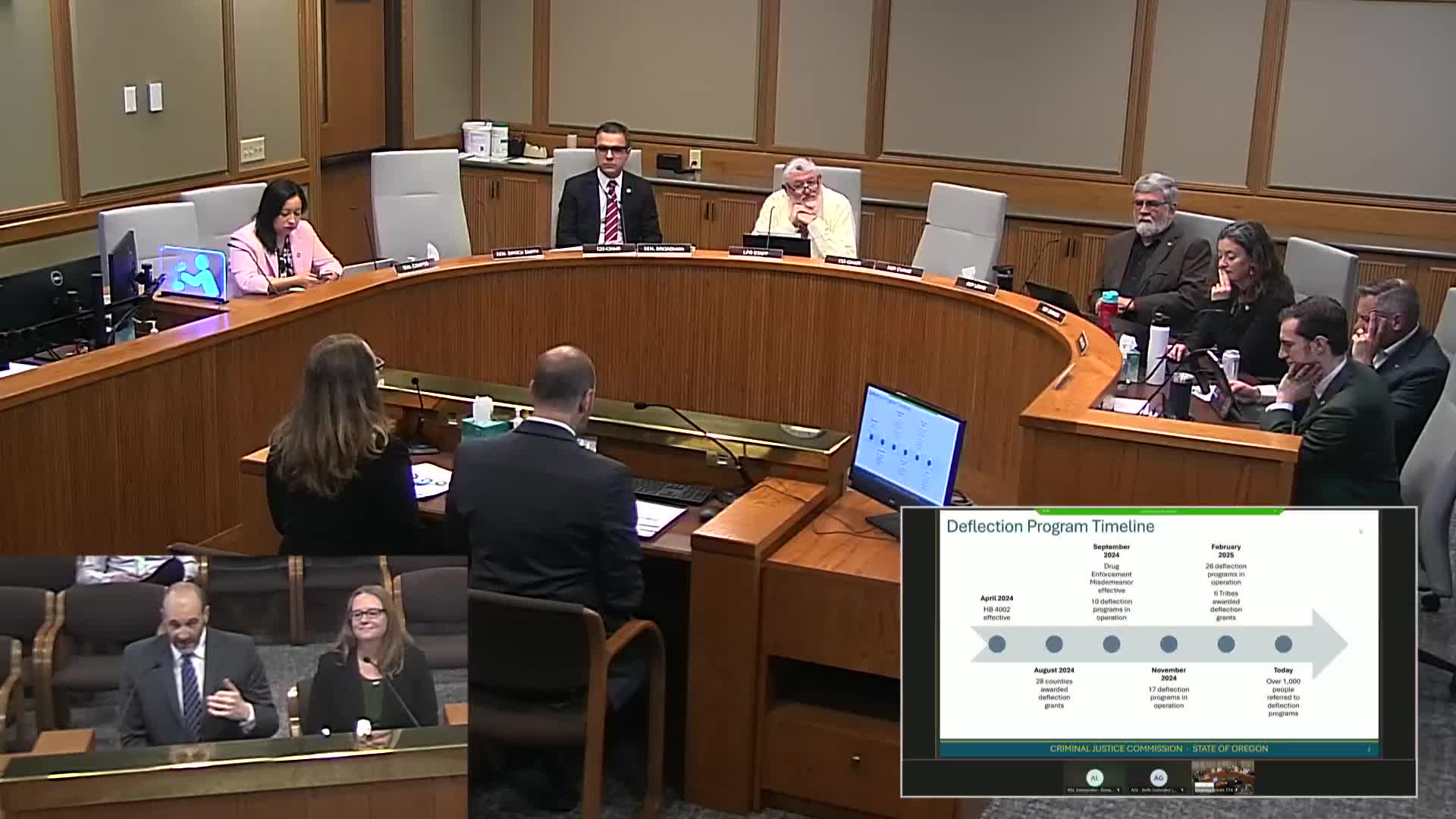Counties launch drug enforcement programs under House Bill 2 4,002 initiative
April 30, 2025 | Public Safety, Ways and Means, Joint, Committees, Legislative, Oregon
This article was created by AI summarizing key points discussed. AI makes mistakes, so for full details and context, please refer to the video of the full meeting. Please report any errors so we can fix them. Report an error »

The recent meeting of the Joint Committee on Ways and Means Subcommittee on Public Safety highlighted significant developments in Oregon's public safety initiatives, particularly regarding the implementation of House Bill 24002. This legislation, which took effect in April, has enabled 28 counties to launch 27 programs aimed at addressing drug enforcement and rehabilitation.
The meeting revealed that the rollout of these programs has been notably swift. By September, ten programs were operational, with an additional seven launched by November. As of February, only one program remained to be activated, indicating a rapid response to the needs of local communities. The data presented showed that over a thousand individuals have already benefited from these initiatives, underscoring the immediate impact of the legislation.
A key takeaway from the discussions was the recognition of the collaborative efforts among counties and the Criminal Justice Commission (CJC). Many counties developed their programs from the ground up, tailoring them to meet local needs and leveraging available resources. This flexibility allowed for innovative solutions to emerge in a critical time for the justice system.
However, officials cautioned that while the early results are promising, it is still too soon for comprehensive analysis. The rapid implementation means that data collection and evaluation are ongoing, making it challenging to draw definitive conclusions about the long-term effectiveness of these programs.
The meeting also emphasized the importance of partnerships in these initiatives. Counties were required to collaborate with various stakeholders to ensure a well-rounded approach to public safety and rehabilitation. This collaborative framework is designed to enhance the effectiveness of the programs and ensure they are responsive to the unique challenges faced by different jurisdictions.
In conclusion, the discussions at the meeting reflect a proactive approach to public safety in Oregon, with a focus on innovative, localized solutions to drug-related issues. As these programs continue to develop, ongoing evaluation will be crucial to understanding their impact and effectiveness in the community. The next steps will involve further data collection and analysis to assess the long-term outcomes of these initiatives.
The meeting revealed that the rollout of these programs has been notably swift. By September, ten programs were operational, with an additional seven launched by November. As of February, only one program remained to be activated, indicating a rapid response to the needs of local communities. The data presented showed that over a thousand individuals have already benefited from these initiatives, underscoring the immediate impact of the legislation.
A key takeaway from the discussions was the recognition of the collaborative efforts among counties and the Criminal Justice Commission (CJC). Many counties developed their programs from the ground up, tailoring them to meet local needs and leveraging available resources. This flexibility allowed for innovative solutions to emerge in a critical time for the justice system.
However, officials cautioned that while the early results are promising, it is still too soon for comprehensive analysis. The rapid implementation means that data collection and evaluation are ongoing, making it challenging to draw definitive conclusions about the long-term effectiveness of these programs.
The meeting also emphasized the importance of partnerships in these initiatives. Counties were required to collaborate with various stakeholders to ensure a well-rounded approach to public safety and rehabilitation. This collaborative framework is designed to enhance the effectiveness of the programs and ensure they are responsive to the unique challenges faced by different jurisdictions.
In conclusion, the discussions at the meeting reflect a proactive approach to public safety in Oregon, with a focus on innovative, localized solutions to drug-related issues. As these programs continue to develop, ongoing evaluation will be crucial to understanding their impact and effectiveness in the community. The next steps will involve further data collection and analysis to assess the long-term outcomes of these initiatives.
View full meeting
This article is based on a recent meeting—watch the full video and explore the complete transcript for deeper insights into the discussion.
View full meeting
